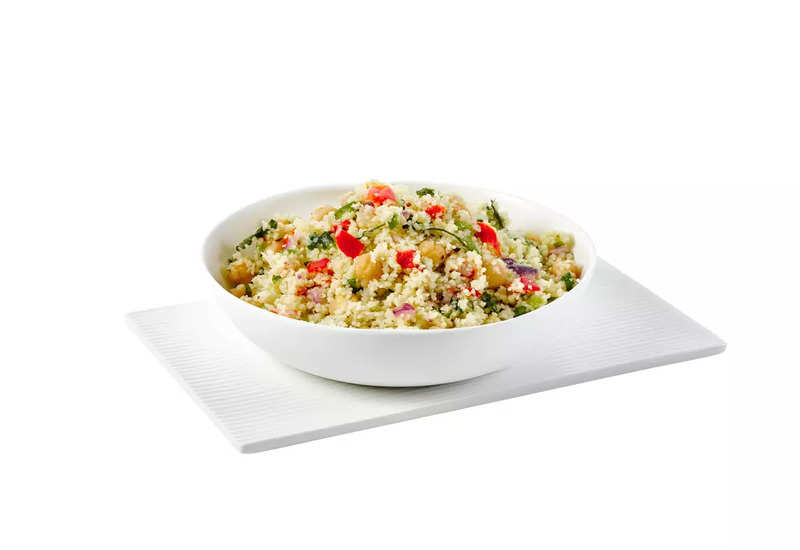Couscous is a tiny, round pasta-like food made from durum wheat flour. It's been around since the 7th century and is prized for its versatility. Couscous can be made into a sweet porridge with milk and fruits and also as a savoury dish with chicken and fresh vegetables. Couscous has a nutty flavour and can be substituted for rice. If paired with proteins and roasted veggies, it makes for a great low-calorie meal.
Health benefits of couscous
Couscous can provide many health benefits if it's made out of whole grains. The fibre keeps you feeling full for a longer time and could aid in reducing cholesterol levels, which can lower the risk of cardiovascular diseases. The fibre content in couscous can also relieve constipation and protect against intestinal cancers.
Some health benefits of couscous:
- Has antibacterial properties
- Speeds up healing
- Aids in weight loss
- Boosts immune system
- Improves digestion
- Regulates metabolism
- Improves heart health
- Builds muscle mass
1. Aids in weight loss: Couscous is a low-calorie food. Couscous is the best option for those who are trying to lose weight. Couscous is also low in saturated fats, sodium and cholesterol.
2. Optimizes fluid balance: Couscous contains potassium, which is beneficial for regulating the fluid and cellular pathways. Fluid balance is important in maintaining blood pressure throughout the body.
3. Has cancer-fighting properties: Selenium is a vital element in couscous, which is linked to many health benefits. It may help to prevent certain types of cancer.
Nutritional composition of couscous
100 gm of couscous has the following composition.
| NUTRITIONAL FACT | MEASURE%(DV) |
| Calories | 112 |
| Fat | 0% |
| Cholesterol | 0% |
| Sodium | 0% |
| Vitamin B6 | 2% |
| Calcium | 0% |
| Iron | 2%$ |
| Magnesium | 2% |
| Fibre | 5% |
| Carbohydrates | 7% |
| Potassium | 1% |
| Cobalamin | 0% |
| Protein | 7% |
How to cook couscous
Cooking couscous can be done in a jiffy. All you have to do is add hot liquid to it and let it rest.
To cook couscous perfectly, you need to follow the 1:1 ratio -- add one cup of hot water or stock to one cup of couscous. Otherwise, you may end up with very soggy or very dry couscous. Once the water is absorbed, fluff it up with a fork.
You could eat couscous on its own or add it to soups or salads. It also goes well with curries and sauces. Toasting couscous is also recommended if you want a nuttier flavour.
Disclaimer:
“The recipes, food, its nutritional value or any other information are developed/shared by expert professionals as per their skill levels. The website shall not be responsible for any consequences arising as a result of using or following any information given in this video/article. Viewers discretion advised.”
